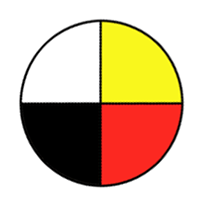Assess the impact of past and current heating and cooling technologies related to food, clothing, and shelter on self, society, and the environment.
TPS, DM, CP
| (a) |
Illustrate the historical development and the underlying scientific principles of technologies designed to address practical problems regarding human heating and cooling needs for food, shelter, and clothing (e.g., oven mitts, survival suits, air conditioning, central heating, thermos, refrigerators, stoves, heaters, home insulation, fleece jackets, and toques). |
| (b) |
Communicate questions, ideas, intentions, plans, and results of inquiries related to heat transmission using lists, notes in point form, sentences, data tables, graphs, drawings, oral language, and other means. |
| (c) |
Analyze the impact of the design and function of a heating- or cooling-related technology on self and society. |
| (d) |
Compare, in qualitative terms, the heat capacities of some common materials, including water, and explain how heat capacity influences choices of materials used in the development of technologies related to clothing, food, and shelter. |
| (e) |
Evaluate the efficiency of different types of home insulation (e.g., sod, straw bales, fibreglass, cellulose, mineral wool, polystyrene, and polyurethane foam) with respect to criteria such as R-value, cost, and resistance to water and air infiltration. |
| (f) |
Use a technological problem-solving process to design, construct, and evaluate a prototype of a device that will provide a solution to a practical problem related to heating or cooling (e.g., cooking food, keeping food warm or cool for an extended period, keeping a shelter warm or cool, keeping a person warm or cool). |
| (g) |
Assess the design of a personally constructed heating or cooling prototype using collaboratively developed criteria. |
| (h) |
Provide examples of problems related to heating and cooling that arise at home, in an industrial setting, or in the environment, that cannot be solved using scientific and technological knowledge. |
| (i) |
Create a photo journal of science- and technology-based careers in the community related to heating and cooling, such as heating systems and equipment contractors, and boiler engineers. |







Microbiology gives us insight into the part played by bacteria, yeasts and fungi. Biochemistry reveals how the chemical processes in living organisms cause change. Entymology reveals the vital role of insects in the great cycle of decay. The video also explores the incredible science behind preservation, from new food packaging and chemical additives to UV radiation and osmotic pressures.


